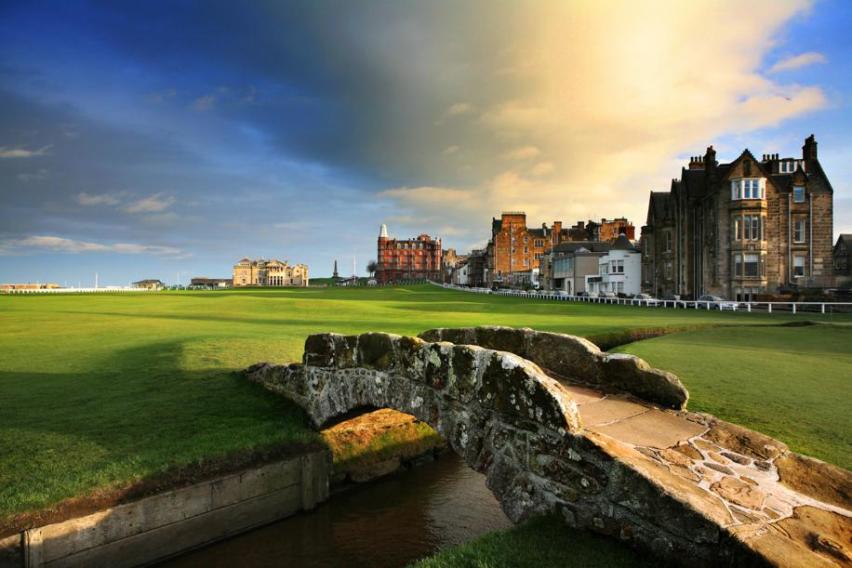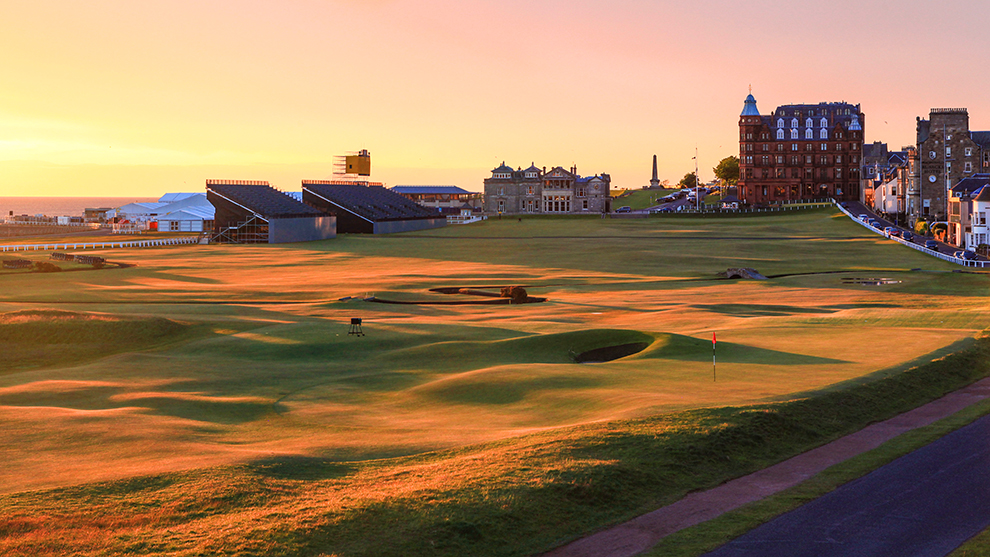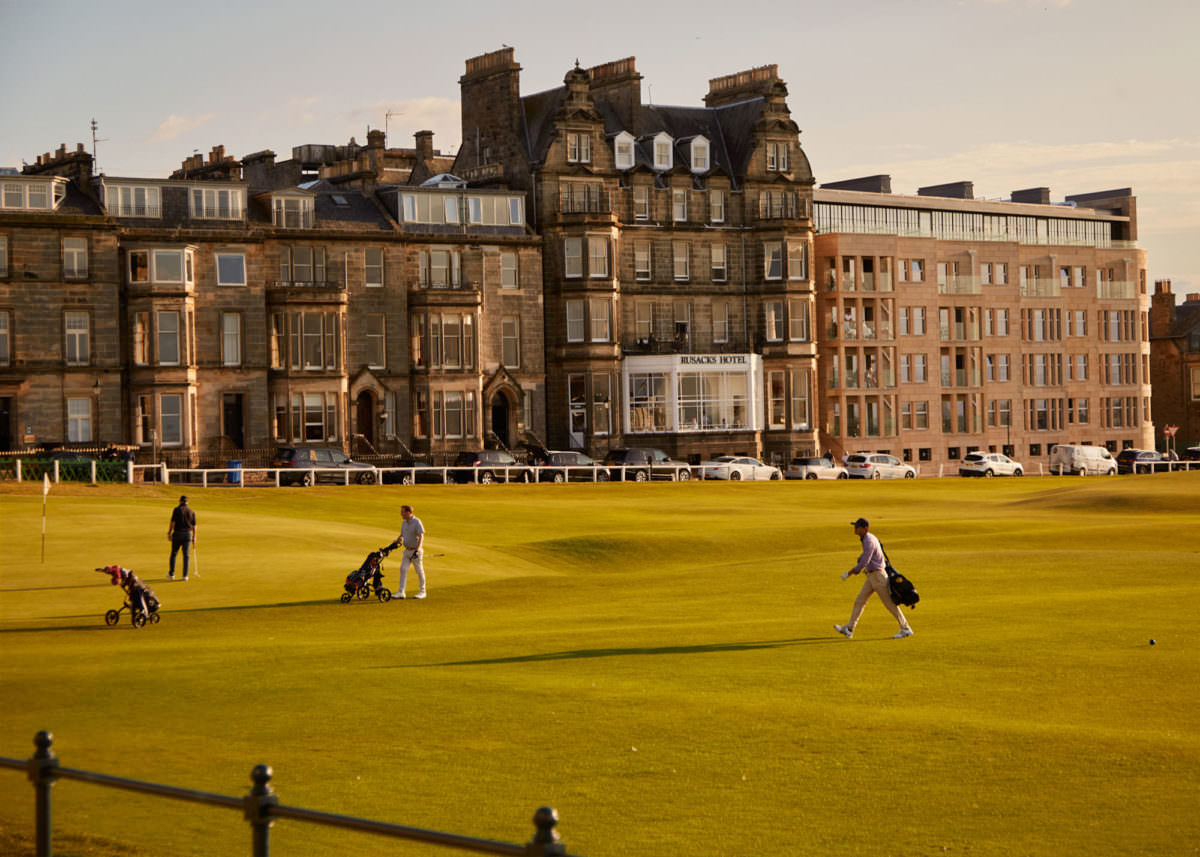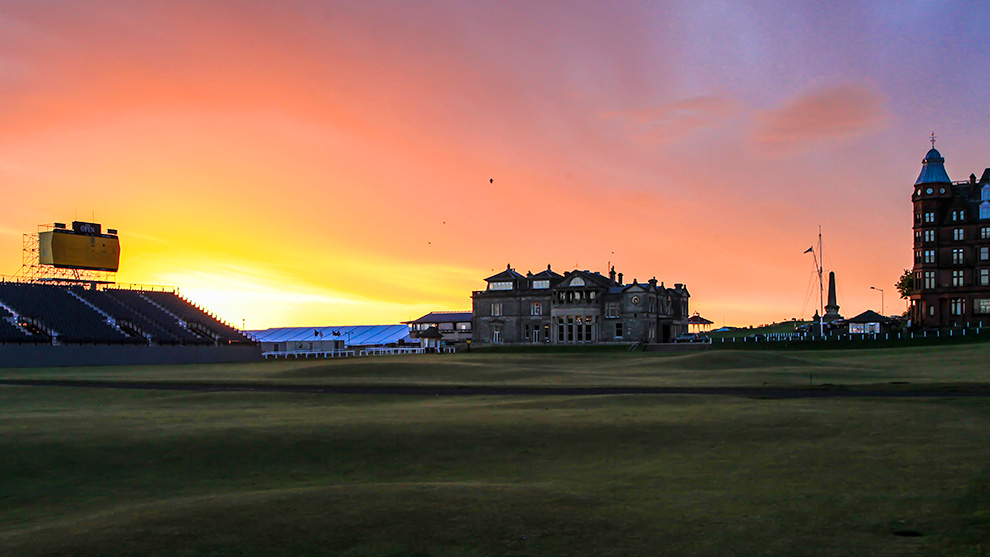We aren’t living in the Middle Ages anymore, and yet, pilgrimages are no less prominent than they were centuries ago.
“Pilgrimage is still a bona fide spirit-renewing ritual,” writes author, screenwriter and documentary filmmaker Phil Cousineau. “But I also believe in pilgrimage as a powerful metaphor for any journey with the purpose of finding something that matters deeply to the traveler.”
In other words, today’s pilgrimages are tailored around an individual’s personal passions.
Bourbon enthusiasts, for example, descend upon Lexington, Louisville and much of the 70 miles in between to drink their way across Kentucky’s bourbon trail. Similarly, fans of country music flock to Nashville to experience the city’s slew of honky-tonk bars. As for golf, the most meaningful pilgrimages bring golf enthusiasts to Scotland – more specifically, to St. Andrews.
It’s no coincidence that St. Andrews hosted the 150th Open Championship this year. Such a monumental event would simply feel out of place anywhere else. When asked to describe the sanctity of St. Andrews and the Old Course in particular, 1946 Open Champion Sam Snead once declared: “The only place in Britain that’s holier is Westminster Abbey.”
Almost 60 years later, Tiger Woods made a similar proclamation.
“Every great player who has ever played the game has played that golf course,” he said. “There is no other golf course in the world that can say that.”

Aside from a bevy of Open Championship preparations that have been made throughout St. Andrews (and around the Old Course) this spring, the area of town that runs adjacent to the 18th fairway has also changed significantly over the past couple of years. Following Adventurous Journeys (AJ) Capital Partners’ acquisition of the hotel in 2019, the property enjoyed a comprehensive renovation, including a sizable expansion throughout the pandemic. After a soft opening in the fall, the hotel debuted in earnest earlier this year. Now positioned as the flagship hotel of Marine & Lawn Hotels & Resorts (a new brand of boutique golf hotels), the Rusacks shines as one of the most desirable places—perhaps the most desirable place—to stay in St. Andrews, especially for avid golfers.
“St. Andrews is the mecca of golf,” says Phillip Allen, Marine & Lawn’s president. “If you love the game you have to get there at least once in your life.”
Forests and Trees
When someone is so intently focused on the details that they cannot acknowledge the big picture, it’s said that they cannot see the forest for the trees. Fortunately, such an affliction is not one that mars first-time visitors to St. Andrews. In fact, it’s quite the opposite.
When you first arrive in the city—especially as you pass down Golf Place—the grandness of St. Andrews rushes up to greet you. The stately appearance of the Royal & Ancient clubhouse grabs your attention first, followed by the vast, 100-yard-wide stretch of fairway that leads golfers away from the town and then brings them back at the conclusion of their rounds. First-timers in St. Andrews likely will also find their gaze drawn to the centuries-old architecture of the edifices that line The Links road.
But there are finer details that might easily be missed should visitors not know to look for them. For example, if you’re venturing back into town along The Links road that parallels the 18th fairway – perhaps you’re returning from a round on the Eden Course (more on this later) or maybe you’ve just enjoyed a pint or a dram at the Jigger Inn – you’ll likely be drawn to the action on the course, which means you might overlook the 29 bronze plaques that were recently set into the sidewalk and serve as St. Andrews’ walk of fame. From James Braid and Bobby Jones to Sam Snead, Jack Nicklaus, Seve Ballesteros and Tiger Woods – one for every Champion Golfer of the Year who earned that title on the Old Course, dating back to the first Open Championship contested in St. Andrews in 1873 -- is enshrined along that walkway.
You might also overlook Links House, the home of The St. Andrews Golf Club, a private golf society founded in 1843 that welcomed both Old Tom Morris and Young Tom Morris as members. In fact, 11 of the club’s members have won the Open Championship a total of 20 times, while other distinguished golfers such as Bobby Jones and Jack Nicklaus have been granted honorary memberships into the club over the years.

The details are also important out on any of the golf courses in and around St. Andrews – really, they’re equally important at courses throughout all of Scotland. Too often, Americans cling to the tendencies that serve them well on the soft, parkland-style golf courses back home. In doing so they struggle to play well. It’s all about the terrain in Scotland, which is to say that the firm and fast fairways and greens often produce firm bounces and fast rolls. As long as you can account for that, you’ll most often keep your ball out of trouble. You’ll also give yourself the best odds of knocking some shots close.
Remember, too, that many of the delicate chip shots and pitches around the green that you’re used to playing with high-lofted wedges are successful in the States because the ground is soft enough to absorb some of the force of the club’s interaction with it. But for the golfer with average abilities, a flopped wedge in Scotland works about as well as papier-mache surfboard. You’d be better served keeping the ball low with bump-and-runs. In Scotland, the ground is your friend – so long as you treat it as such. When in doubt, use your putter.
There are also times during a round of golf when the details are inconsequential. When you’re tempted to stop to tally your score or to reflect on how you’re playing or to count how many times you’ve three-putted… don’t. Those are the details that can torpedo a round – not in terms of the final number on a scorecard but for how a golfer enjoys the opportunity.
“You’re going to play some of the best and most famous golf courses in the world so don’t go into a funk when you shoot double your handicap and don’t let that spoil your experience,” says Sam Baker, the founder and chairman of Haversham & Baker Golfing Expeditions, who has traveled to and played golf in Scotland more times than he can count.
“The experience isn’t about what you score,” he adds. “I’ve had some terrific rounds in Scotland and most of them I don’t remember [what I shot]. It’s way more about the caddies and the people.”
Accommodations
Although it was the world’s first purpose-built golf hotel (opened in 1877), the Rusacks hasn’t always been St. Andrews’ premiere choice when it comes to luxurious lodging. It certainly was across much of the 20th century, and its figurative guest book boasts the high-profile names to back that up. Arnold Palmer never stayed anywhere else when he was in town, so says Rusacks’ general manager Seamus Coen.
By the late ‘90s or early 2000s, however, the hotel was in dire need of some TLC. It had grown dated and tired, and the radiance of The Old Course Hotel some 600 yards away cast a wide shadow from which the Rusacks couldn’t escape. As Coen explains, the historic hotel had become “an old lady in need of a complete facelift.”

With that long-needed makeover now complete, the Rusacks is once again ready for its close-up. All 70 of the hotel’s original guestrooms and suites are swathed in modern décor inspired by classic Scottish aesthetics, while the property’s new 42,000-square-foot expansion added 50 additional guest rooms. That new wing also delivers a unique guest experience, as its 10 Swilcan king and twin guestrooms feature balconies that look out over the first and 18th fairways, while the hotel’s new rooftop patio offers a similar panoramic view, albeit from a higher vantage point.
“I would put the Rusacks up against any other golf hotel in the world for its location,” says Allen. “You can stand on your balcony or at your window and watch people coming and going all day. It has the best location and best views in the best golf city in the world. That’s hard to beat.”
As locations go, Marine & Lawn’s second golf hotel in North Berwick, boasts a locale that may not beat the Rusacks but it certainly comes close. Set on the southern edge of the North Berwick Golf Club, Marine North Berwick offers sweeping views of that historic golf course, the Firth of Forth, and Bass Rock beyond. Like the Rusacks, Marine North Berwick recently benefited from a broad renovation, which makes the “Grand Old Lady,” as the hotel has often been called, an ideal destination for avid golfers who are looking to experience the best of East Lothian’s links.
In fact, many golfers, including PGA Tour winner Max Homa, believe the course just beyond the hotel’s gate is the finest in the area. As Homa explained in an interview for the PGA Tour, he first learned of the course several years ago via a YouTube vlog.
“It became my favorite course I had never played,” said Homa, who then made a point of playing a social round of golf there late in the afternoon following his second round in the Genesis Scottish Open this year.
“I knew I was going to be beat,” Homa acknowledged, “but it’s one of those once-in-a-lifetime things and I’d be kicking myself if I didn’t play.”
As it turns out, the decision to play at North Berwick was a wise one. Not only did Homa shoot a 4-under 66 during the third round of the Scottish Open the next day, but the 31-year-old described his impromptu round as “one of the best golf experiences I’ve ever had.”
Hidden Gems
Those who travel to Marine North Berwick specifically for golf will certainly have their sights set on a round played effectively in the hotel’s backyard, as Homa did. They’ll assuredly want to tee it up at Muirfield, as well, should they be fortunate enough to visit the Honourable Company of Edinburgh Golfers, as the famous course’s golf club is known.
However, the northern coast of East Lothian is home to several other lesser-known links courses worthy of play, beginning with the Glen Golf Club, commonly referred to as North Berwick’s East Links. With its roots dating back to 1906, the layout stretches across a cliff-side bluff and has drawn comparisons to Pebble Beach for its dramatic seaside views, not to mention several holes that require drop shots hit to greens perched precariously along the rocky coast or cliff’s edge.
The ninth and 13th holes are both dramatic par 3s – the former playing downhill and toward the sea but often into a strong headwind, while the latter plays across the coastline to another sunken green, this one severely cantered and not much larger than Royal Troon’s famous Postage Stamp. The most memorable tee shot on the course, however, comes at the last hole. From a substantially elevated tee box, golfers hit drives back toward the clubhouse with Milsey Bay Beach running down the entire right side and the town of North Berwick in the distance.
From the East Links, a 13-minute drive west past Marine North Berwick brings travelers to Gullane Golf Club, which is home to three courses, the most alluring of which is its original, No. 1, an historic golfing layout with ties to the 17th century, though its current configuration dates to 1884. Much like the Glen Golf Club, much of Gullane’s No. 1 layout stretches across a bluff and is exposed to the elements. When the Scottish weather bristles, the course can be a brute, but on calm late afternoons in the spring or summer evenings, the course takes on a peaceful, spiritual quality.
Such is also the case on the Eden Course in St. Andrews, a charming links layout designed by Harry S. Colt, who used the site’s natural boundaries and penal bunkers to create a short course (6,250 yards from the back tees) that is teeming with character. As with any of the St. Andrews Links courses, the Eden can be a bear when the wind picks up, but unlike the Jubilee Course or the New Course, both of which are defined by tighter playing corridors and several blind shots, the Eden is a welcoming course, one that mostly reveals itself from the tee.
Yet, for all of the merits that the less-heralded St. Andrews Links courses can offer, the town’s most famous layout—arguably the world’s most famous golf course—offers a playing experience that simply cannot be replicated, if only because of the site’s vast history and all of the notable shots and championships that have been contested upon it.
“You never get complacent about standing on that first tee,” says Coen, who acknowledges that the Old Course would be his pick for a final round of golf as well as the layout that he would play for the rest of his life if he could only play one course. “No matter how many times you’ve played it, there’s a little sense of nervousness that you feel as you start a new round.”

